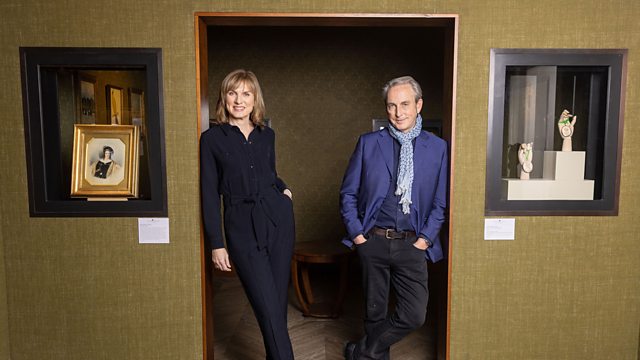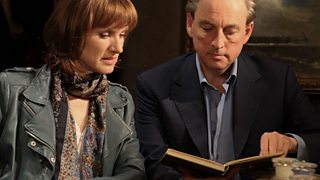Arshile Gorky
Could a mysterious canvas covered in white paint be hiding a lost masterpiece by one of the most important painters of the 20th century, Armenian-American artist Arshile Gorky?
Fiona Bruce and Philip Mould investigate a murky canvas that could be by Arshile Gorky, a pioneer of abstract expressionism. Works by this Armenian-American artist fetch millions at auction, but there is one major hurdle in the way of owner Liza Dunluce realising its fortune – the canvas is covered in white paint.
The picture was a gift to Liza’s late husband Alexander in 1965, when he was keeper of conservation at the Tate Gallery. Alexander was a highly respected restorer of paintings, and Gorky’s widow Agnes ‘Mougouch’ Magruder instructed him to remove the white layer so that the picture could be exhibited in a major retrospective of Gorky’s work. When Alexander couldn’t clean the picture safely in time for the exhibition, ‘Mougouch’ gave it to him.
Nearly six decades later, the painting remains in the family, partially obscured and unidentified as a work by Gorky. Fed up with not getting any further with it, Liza has asked the Fake or Fortune team to help. At the Courtauld Institute, Professor Aviva Burnstock undertakes technical analysis of the painting to try and determine if there’s a safe solution for cleaning it. A cross-section of the picture reveals that the white top layer is a cheap household paint, different in chemical composition to the more refined artist’s paints underneath. Liza commissions conservators Katya Belaia-Selzer and Eppie Petrina to try to remove the white layer. If they can find a solution that will dissolve the household paint without damaging the layer underneath, it’s possible Mougouch’s wish of having the picture restored can finally be realised.
Dates on the back of the canvas suggest it was painted between 1928 and 1931, but what is visible of the original composition through the gaps in the white paint looks nothing like Gorky’s work from this early period of his career. At this time, his style was characterised by geometric shapes and primary colours. The amorphous, brown-toned composition partially visible is much more in keeping with the artist’s later works from the 1940s. This is when Gorky had developed his own enigmatic style that would go on to make him one of the most important American painters of the 20th century.
Philip hopes an x-ray will explain why the dates on the back of the canvas don’t match the style of the painting on the front. Could there be another, earlier work buried deep beneath the layers of paint? Tantalisingly, Fiona’s research reveals a lost Gorky from the 1930s, known only by a photograph. Could this picture lie hidden beneath a 1940s composition?
A Gorky from the 1940s could be worth several millions, but only if the painting is authenticated by the Gorky Foundation. Events take a turn after the Gorky family go to see the picture and raise a startling question – should the white paint layer be removed at all? The artist’s granddaughter, Saskia Spender, tells Fiona that Gorky sometimes used white paint to partially cover up his pictures as part of the creative process. Could Liza’s canvas be made up of not one, not two, but three pictures – the white layer on top being a further composition?
Saskia warns that if Liza continues with the removal of the white layer, the Gorky Foundation may not authenticate the work at all, irrespective of whether the artist painted it or not. Liza and the team are faced with an ethical dilemma – should they remove paint that the artist applied or leave the work in a permanent state of limbo?
This proves to be one of the most challenging investigations on the series yet. With millions at stake, will Liza’s picture turn out to be neither Fake nor Fortune?
Last on
More episodes
Previous
Next
You are at the last episode
Credits
| Role | Contributor |
|---|---|
| Presenter | Fiona Bruce |
| Presenter | Philip Mould |
| Series Editor | Robert Murphy |
| Production Manager | Kirsty Brettle |
| Producer | Julia Foot |


